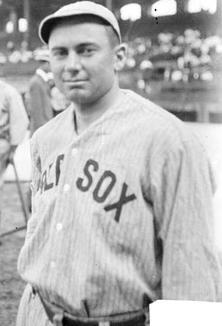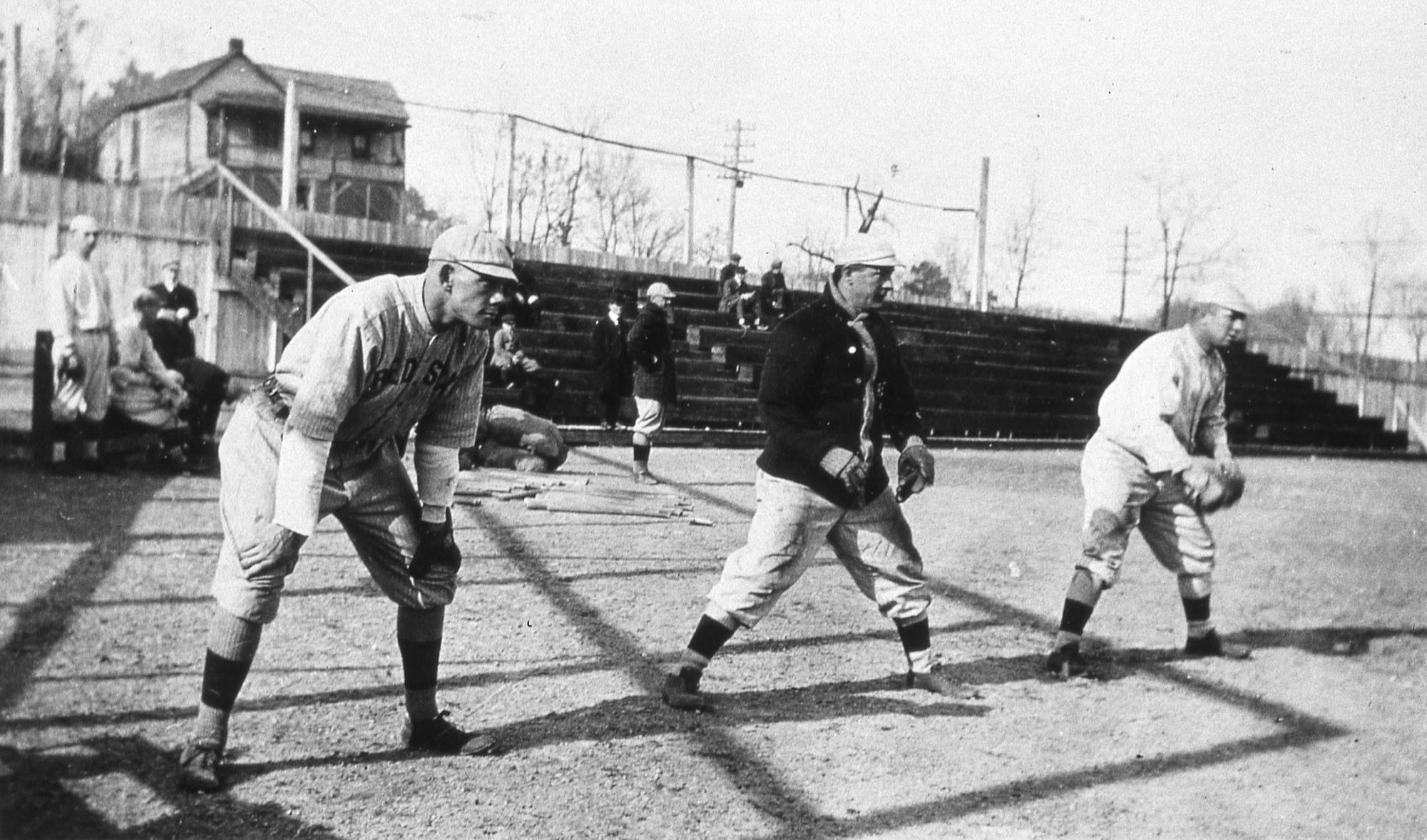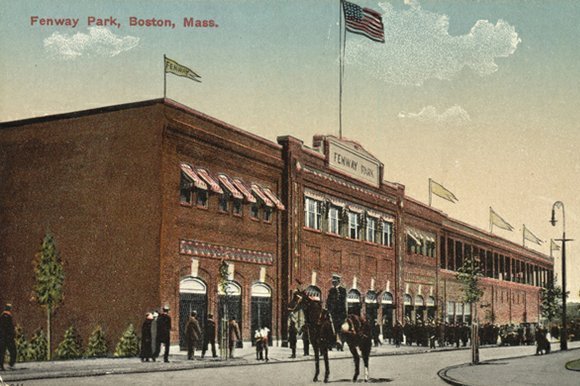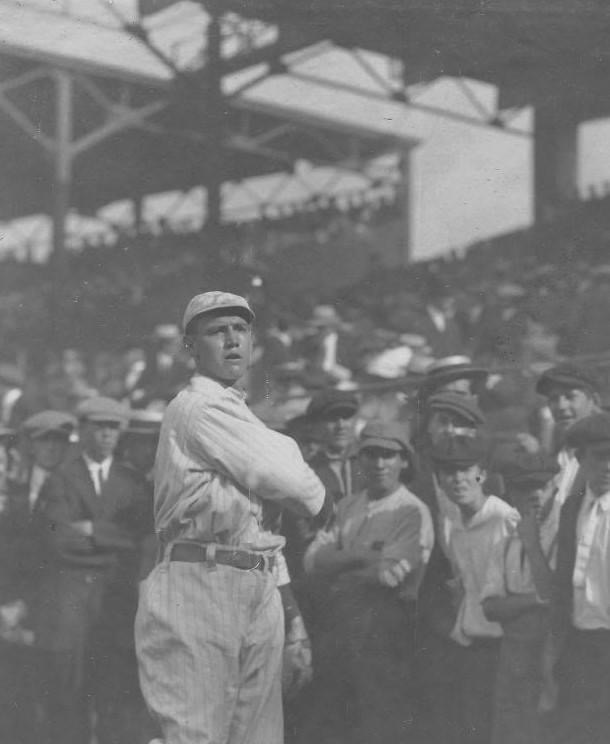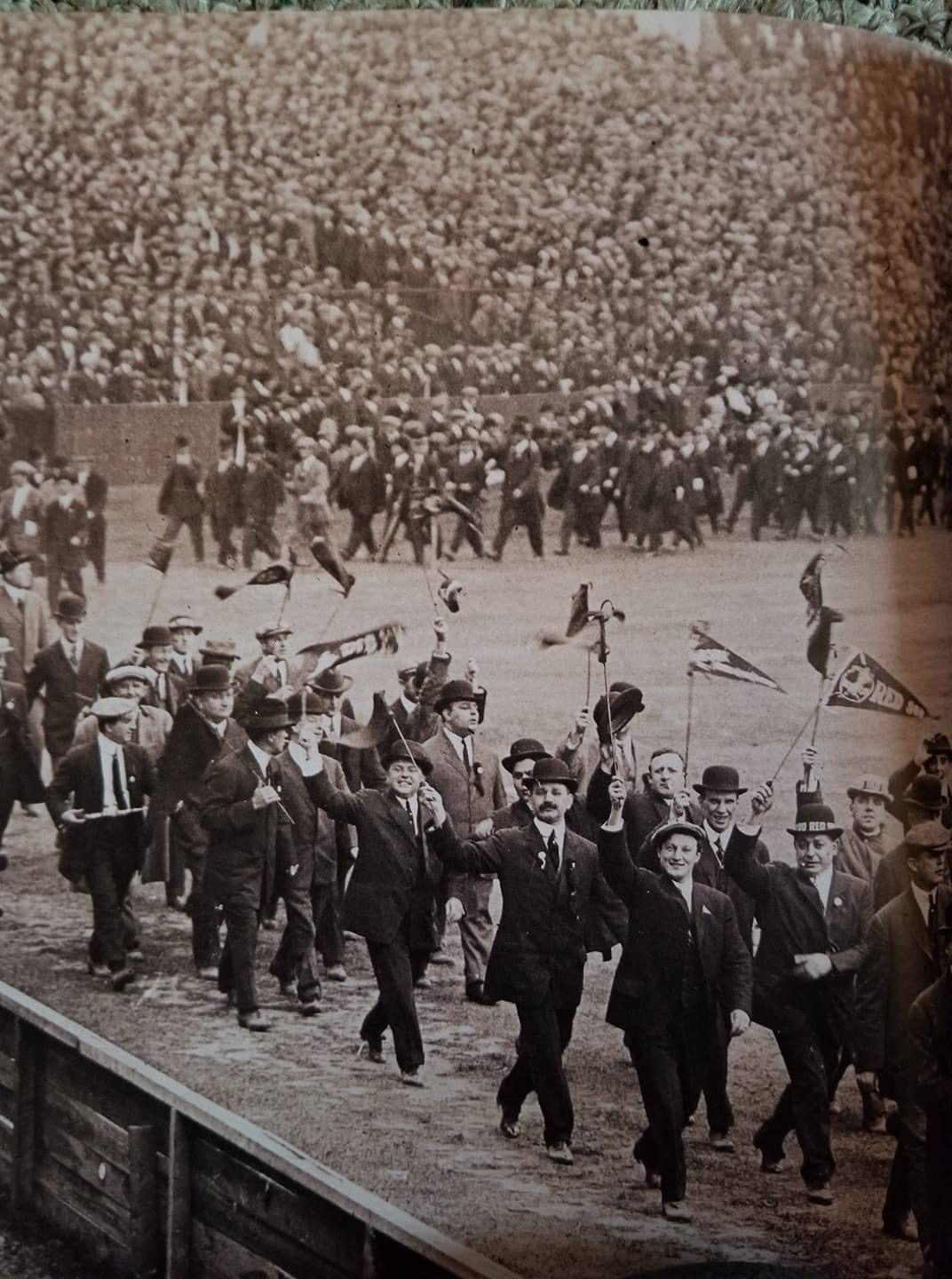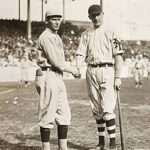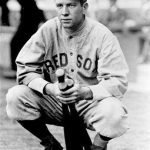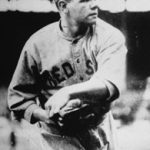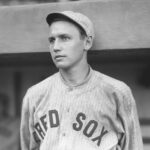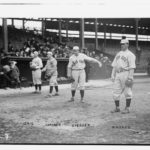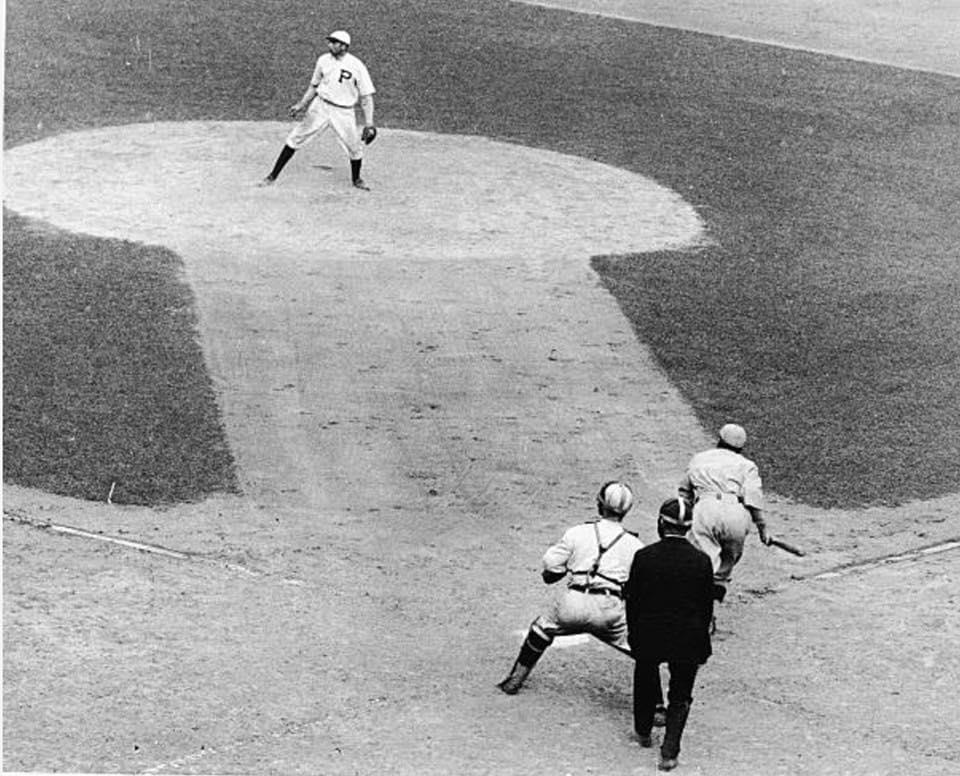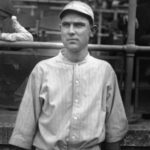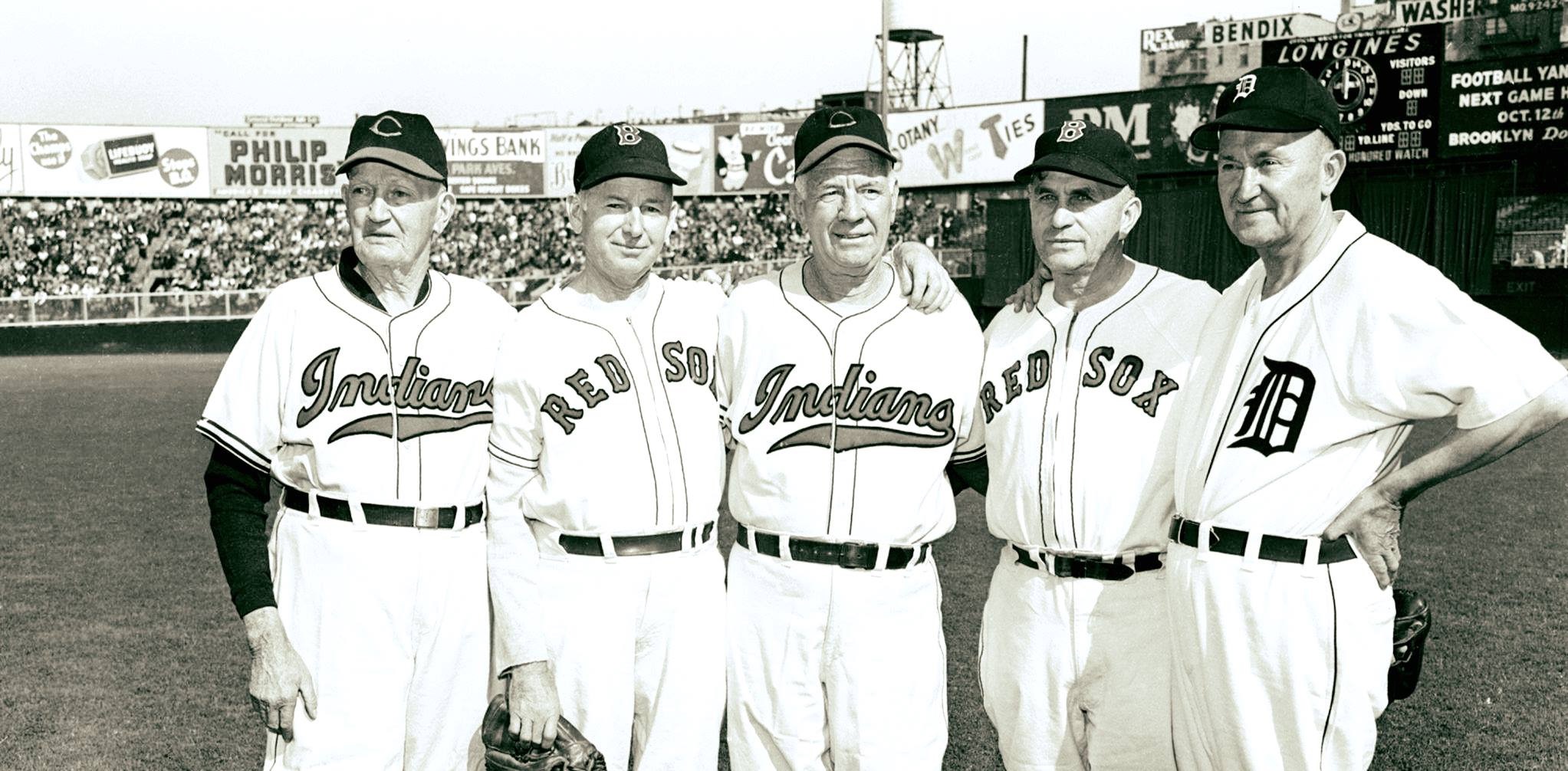Duffy Lewis Stats & Facts
Duffy Lewis
Position: Leftfielder
Bats: Right • Throws: Right
5-10, 165lb (178cm, 74kg)
Born: April 18, 1888 in San Francisco, CA us
Died: June 17, 1979 in Salem, NH
Buried: Holy Cross Cemetery, Londonderry, NH
High School: Alameda HS (Alameda, CA)
School: Saint Mary’s College of California (Moraga, CA)
Debut: April 16, 1910 (3,297th in major league history)
vs. NYY 3 AB, 0 H, 0 HR, 0 RBI, 0 SB
Last Game: June 6, 1921
vs. CHW 5 AB, 0 H, 0 HR, 0 RBI, 0 SB
Full Name: George Edward Lewis
View Player Info from the B-R Bullpen
View Player Bio from the SABR BioProject
Card Collections ENDING SOON ON EBAY
MOST WANTED ROOKIE CARDS
VINTAGE SPORTS TICKETS
Baseball Hall of Famers
Nine Players Who Debuted in 1910
Max Carey
Jake Daubert
Roger Peckinpaugh
Shano Collins
Duffy Lewis
Eddie Foster
Chick Gandil
Ray Caldwell
Hank Gowdy
All-Time Teammate Team
Coming Soon
Notable Events and Chronology for Duffy Lewis Career
Biography Duffy Lewis
Lewis was the left fielder in the famous Red Sox outfield that included Tris Speaker and Harry Hooper. He became so adept at fielding along the steep incline in front of Fenway Park’s left-field fence that it became known as “Duffy’s Cliff.” Despite being one of the few players apparently liked by Ty Cobb, Lewis’s fondest memories included throwing out Cobb as he attempted to stretch hits. At bat, he was a reliable line-drive hitter and good RBI man, with a personal high of 109 in 1912. In 1914 he became the first ML player to pinch hit for Babe Ruth, then a Red Sox rookie pitcher. The next season, he saw Ruth’s first homer; in 1935, as traveling secretary for the Braves, a post he held for 30 years, he saw Ruth’s last.
Biographical Information
Duffy Lewis played on three Boston Red Sox teams that won the World Series. He was an outfielder for 20 years (1907-1917; 1919-1927), three in college (1907-1909), 11 in the Major Leagues (1910-1917; 1919-1921) and nine in the minors (1907-1909; 1922-1927), losing one year to the Military.
Lewis was born on April 18, 1888, in San Francisco, CA. He was 21 years old when he broke into the big leagues on April 16 1910, with the Boston Red Sox. He played for the Saint Mary’s College of California (1907-1909), the Red Sox (1910-1917); the New York Yankees (1919-1920), and the Washington Senators (1921). He missed the entire 1918 season when he served in the U.S. Army during World War I (BL). He married Eleanor Ruth Keane on October 30, 1911 and was an avid fisherman. His last game was with the Senators on June 6, 1921 but he continued as a player/manager in the minors until 1927.
After growing up in the tough sections of San Francisco, Lewis played baseball up and down the coast of California, finally gaining the attention of big league scouts. He covered the outfield with strong, quick strides, and packed punch in his short right-handed swing. In 1910, he joined Tris Speaker and Harry Hooper in Boston’s starting outfield as the left fielder, and the celebrated trio helped the Red Sox to a pair of World Series titles.
He became so adept at fielding along the steep incline in front of Fenway Park’s left-field fence that it became known as “Duffy’s Cliff.” Despite being one of the few players apparently liked by Ty Cobb, Lewis’s fondest memories included throwing out Cobb as he attempted to stretch hits. At bat, he was a reliable line drive hitter and good RBI man, with a personal high of 109 in 1912.
In 1914 he became the first major league player to pinch hit for Babe Ruth, then a Red Sox rookie pitcher. The next season, he saw Ruth’s first homer; in 1935, as traveling secretary for the Boston Braves, a post he held for 30 years, he saw Ruth’s last.(EC)
In all, Lewis played for three Red Sox title teams, but after missing the entire 1918 season while he served in the U.S. Army, his career was essentially over.
He was primarily a singles hitter, with 1,518 career hits in 1,459 games, including 289 doubles, 69 triples and 37 home runs. He had a career batting average of .284 with 793 runs batted in.
After his playing days in MLB were over, he was a player/manager in the minor leagues until 1927 and only a manager to 1929. He managed Salt Lake City in the Pacific Coast League (PCL) (1922-1924); Portland in the PCL (1925); Mobile in the Southern Association (1926) and Portland in the New England League (1927-1929). He was a coach for the Boston Bees (1931-1935) and their travelling secretary (1936-1965). He died at age 91 at his home in Salem, NH and is buried at Holy Cross Cemetery in Londonderry, NH.
Highlights
1910: On 6 June, Lewis has the only hit —a single— against Chicago White Sox ace Ed Walsh.
1911:
On 13 May, paced by Cobb’s 3rd inning grand slam, his first ever, the Tigers take a 10–1 lead over the Red Sox after five innings. But Boston ties it in the 9th on Lewis’s grand slam, and wins it in the 10th inning, 13–11. Boston outhits Detroit, 20–14.
On 3 October, in the 2nd inning at New York, the Red Sox pull off a double steal with Lewis scoring from third base and Jack Lewis swiping 2B (as noted by Retrosheet). (Jack) Lewis is shaken up on the play and the Hilltoppers allow Duffy to replace him at 2B as a courtesy runner. He doesn’t score and Jack returns to the game as Boston wins. The Sox win their last three games in New York this season, 10 straight in 1912, and the first five games of 1913 — a major-league record 18 games on the road versus one team.
1912:
On 6 September, in a pitcher’s duel between Walter Johnson and Smokey Joe Wood, won by Boston 1-0, Lewis drives in the only run with a double in the sixth inning.
On 3 October in Philadelphia, the Red Sox roll over the Philadelphia Athletics, 17–3, as Wood coasts to his 34th win of the year. Smoky Joe strikes out six and scatters eight hits. Lewis homers for the winners.
On 9 October, three errors by New York Giants shortstop Art Fletcher help put Christy Mathewson behind 4–2 until the team rallies for three in the 8th when Lewis muffs a fly ball by Fred Snodgrass. Darkness ends the game at 6–6 after 11 innings.
On 16 October, in the World Series finale, Mathewson squares off against Hugh Bedient in quest of his first win of the Series. He takes a 1–0 lead into the 7th, but with one out, Boston manager Jake Stahl hits a pop-up to short left field. The ball drops among Fletcher, Josh Devore and Snodgrass. Heinie Wagner walks, and with two outs, pinch hitter Olaf Henriksen doubles home the tying run. Wood relieves Bedient, and the two aces match zeroes until Red Murray doubles and Fred Merkle singles in the 10th to give New York a 2–1 lead. In the last of the 10th, pinch hitter Clyde Engle lifts a can of corn to center fielder Snodgrass, who drops the ball. Snodgrass then makes a great catch of a long drive by Hooper. Steve Yerkes walks, bringing up Speaker, who pops a high foul along the first base line. Catcher Chief Meyers chases it, but it drops a few feet from Merkle at first base, who could have taken it easily. Reprieved, Speaker then singles in the tying run and sends Yerkes to 3B. After Lewis is walked intentionally, third baseman Larry Gardner hits a long sacrifice fly to a retreating Devore that scores Yerkes with the winning run. This World Series was the most butterfingered in history, with thirty-one errors recorded, seventeen for The Giants. The Red Sox earn $4,024.68 each; the Giants’ share is $2,566.47 each.
1914: On 11 July, Babe Ruth breaks in with Boston, striking out in his first at bat, but pitching a 4–3 win over Cleveland. With the score 3–3 in the 7th, Lewis pinch hits for Ruth, singles, and later scores the winning run. Dutch Leonard strikes out four of the six batters he faces in relief.
1915:
On 11 July against the Cleveland Indians, Ruth and Boston win, 4–3. Lewis pinch hits for the Babe late in the game. Jack Graney is the first batter to face Ruth.
On 11 October in Boston, an unprecedented 42,300 are on hand for game three of the World Series and see another 1–1 duel, which is decided in the 9th when Lewis singles home Hooper for a 2–1 hometown win. Leonard walks none, yields three hits, and sets down the last 20 Philadelphia Phillies to face him.
1916: On December 8, the National Commission fines 51 players $25 to $100 for performing in post-season exhibitions. Among the guilty: Babe Ruth, Jack Barry, Duffy Lewis, ten other Red Sox players, and Ty Cobb.
1918: On 18 December, Lewis returns from the military, and is traded by the Red Sox to the Yankees. He goes along with front-line pitchers Ernie Shore and Dutch Leonard for P Ray “Slim” Caldwell, Slim Love, Roxy Walters, Frank Gilhooley and $15,000. The Tigers had turned down a deal for Leonard on the 16th. The Boston Post reports that “it will take a lot to convince Boston fans that they got the best of this one”.
1920: On 31 December, Lewis is traded by the Yankees with George Mogridge to the Washington Senators for Braggo Roth.
1950: On 11 April, the Texas League opener between Dallas and Tulsa is staged in the Cotton Bowl. The Dallas starters taking the field include Ty Cobb, Mickey Cochrane, Tris Speaker, Dizzy Dean, Travis Jackson, Frank Baker, Charlie Gehringer as well as Duffy Lewis and Dallas manager, Charlie Grimm, the two non-Hall of Famers. After Dean throws one pitch, the squad is replaced by the regular Dallas Eagles team. 53,578 fans, the largest paid crowd (since surpassed) in minor-league history, cheer.
Notable Achievements
100 RBI Seasons: 1 (1912)
Won three World Series with the Boston Red Sox (1912, 1915 & 1916)
Quotes About
“His crooked smile couldn’t hide a nasty Irish temper.” — author Tim Gay, in Tris Speaker: The Rough and Tumble Life of a Baseball Legend
Quotes From
“At the crack of the bat you’d turn and run up it. Then you had to pick up the ball and decide whether to jump, go right or left, or rush down again. It took plenty of practice. They made a mountin goat out of me.” — Lewis on playing “Duffy’s Cliff” at Fenway Park
Sources
Principal sources for Duffy Lewis include newspaper obituaries (OB), government Veteran records (VA,CM,CW), Stars & Stripes (S&S), Sporting Life (SL), The Sporting News (TSN), The Sports Encyclopedia:Baseball 2006 by David Neft & Richard Cohen (N&C), old Who’s Who in Baseballs (1916-1921) (WW), old Baseball Registers (1944) (BR) , old Daguerreotypes by TSN (1958;1961) (DAG), Stars&Stripes (S&S), The Baseball Necrology by Bill Lee (BN), Pat Doyle’s Professional Ballplayer DataBase (PD), The Baseball Library (BL), Baseball in World War II Europe by Gary Bedingfield (GB) and The Pacific Coast League: A Statistical History, 1903-1957 by Dennis Snelling; The Historical Register, compled by Bob Hoie & Carlos Bauer; The Biographical Encyclopedia: Baseball by the Editors of Total Baseball; The New Biographical History of Baseball by Donald Dewey and Nicholas Acocella and independent research by Walter Kephart (WK) and Frank Russo (FR) and others.
Further Reading
Mark Armour: “George Edward ‘Duffy’ Lewis”, in David Jones, ed.: Deadball Stars of the American League, SABR, Potomac Books, Inc., Dulles, VA, 2006, pp. 451-452.
@ET-DC@eyJkeW5hbWljIjp0cnVlLCJjb250ZW50IjoicG9zdF90YWdzIiwic2V0dGluZ3MiOnsiYmVmb3JlIjoiTGVhcm4gTW9yZSBhYm91dCB0aGUgdGVhbXMsIHBsYXllcnMsIGJhbGwgcGFya3MgYW5kIGV2ZW50cyB0aGF0IGhhcHBlbmVkIG9uIHRoaXMgZGF0ZSBpbiBoaXN0b3J5IC0gLSAtIC0gLSAtIC0gIiwiYWZ0ZXIiOiIiLCJsaW5rX3RvX3Rlcm1fcGFnZSI6Im9uIiwic2VwYXJhdG9yIjoiIHwgIiwiY2F0ZWdvcnlfdHlwZSI6InBvc3RfdGFnIn19@
Card Collections ENDING SOON ON EBAY
MOST WANTED ROOKIE CARDS
VINTAGE SPORTS TICKETS
Baseball Hall of Famers
Factoids, Quotes, Milestones and Odd Facts
Played For
Boston Red Sox (1910-1917)
New York Yankees (1919-1920)
Washington Senators (1921)
Similar: None
Linked: Tris Speaker and Harry Hooper, his mates in the “Golden Outfield” from 1910-1915
Post-Season Appearances
1912 World Series
1915 World Series
1916 World Series
Factoid
Duffy Lewis became so adept at playing left field in Fenway Park, that the short incline that led to the wall was dubbed “Duffy’s Cliff.”
Scouting Report
Of the three members of Boston’s “Golden Outfield,” Lewis had the weakest throwing arm. Nevertheless, he took pride in his accuracy and told the story of how he pegged Ty Cobb at home plate for years.
Post-Season Notes
After struggling against the Giants’ staff in the 1912 Series, Duffy excelled in his next two Fall Classics. He was 8-for-18 (.444) with five RBI in the five-game victory over the Phillies in 1915, and batted .353 with three extra-base hits the following year as the Sox defeated Brooklyn to repeat. He missed the 1918 Series because he was serving in the military during World War I.
Injuries and Explanation for Missed Playing Time
Lewis missed the entire 1918 season while he served in the Army.
Transactions
December 18, 1918: Traded by the Boston Red Sox with Ernie Shore to the New York Yankees for Frank Gilhooley, Slim Love, Ray Caldwell, Roxy Walters, and $15000 cash.
December 31, 1920: Traded by the New York Yankees with George Mogridge to the Washington Senators for Braggo Roth.
Quotes About Lewis
“His crooked smile couldn’t hide a nasty Irish temper.” — author Tim Gay, in Tris Speaker: The Rough and Tumble Life of a Baseball Legend
Quotes From Lewis
“At the crack of the bat you’d turn and run up it. Then you had to pick up the ball and decide whether to jump, go right or left, or rush down again. It took plenty of practice. They made a mountain goat out of me.” — Lewis on playing “Duffy’s Cliff” at Fenway Park
Trivia: Who was the last player to lead the Yankees in RBI, prior to their acquisition of Babe Ruth in 1920?
Answer: Left fielder Duffy Lewis paced the team with 89 RBI in 1919. Ruth led the Yankees in that category his first five seasons with the club.
Replaced
Left fielder Harry Niles, whose lack of punch (and range) led to his demise as a big-league ballplayer.
Replaced By
While Lewis was away in the Army in 1918, Red Sox skipper Ed Barrow platooned George Whiteman and George “Babe” Ruth. In December, Lewis was dealt to the Yankees, and Ruth played in left one more season before he too was swapped to New York. Lewis had a fine season for the Yankees in 1919, solidifying a shaky outfield, and leading the team with 89 RBI. After playing out in left again in 1920, he was dealt to Washington, where he never cracked the starting lineup.
Best Strength as a Player
Lewis was renowned as a clutch hitter. His performance in the World Series (with the exception of 1912) supports that theory. Though he was considered a great defensive left fielder, his stats are average. It’s possible that his range was hindered by the exceptional coverage Speaker provided from his center field post.
Largest Weakness as a Player
In the only four seasons in which we have caught stealing data during his career, Lewis swiped 39 bases but was thrown out stealing 47 times. That’s not good, even for that era.
Other Resources & Links
Coming Soon
If you would like to add a link or add information for player pages, please contact us here.

